View Archive
Early Figures
I have always appreciated English pottery figures made between 1780 and 1840. They are wonderfully decorative and a prism for peering into the past through the eyes of those who lived then. Fashioned in an era before photography, they afford intriguing three-dimensional glimpses of the people and happenings of those bygone times. Although intrinsically delicate, they exude naive robustness and a colorful cheerfulness that charms. These figures are not just pretty and decorative objects, and they are also important historical artifacts documenting aspects of life otherwise passed and unrecorded.
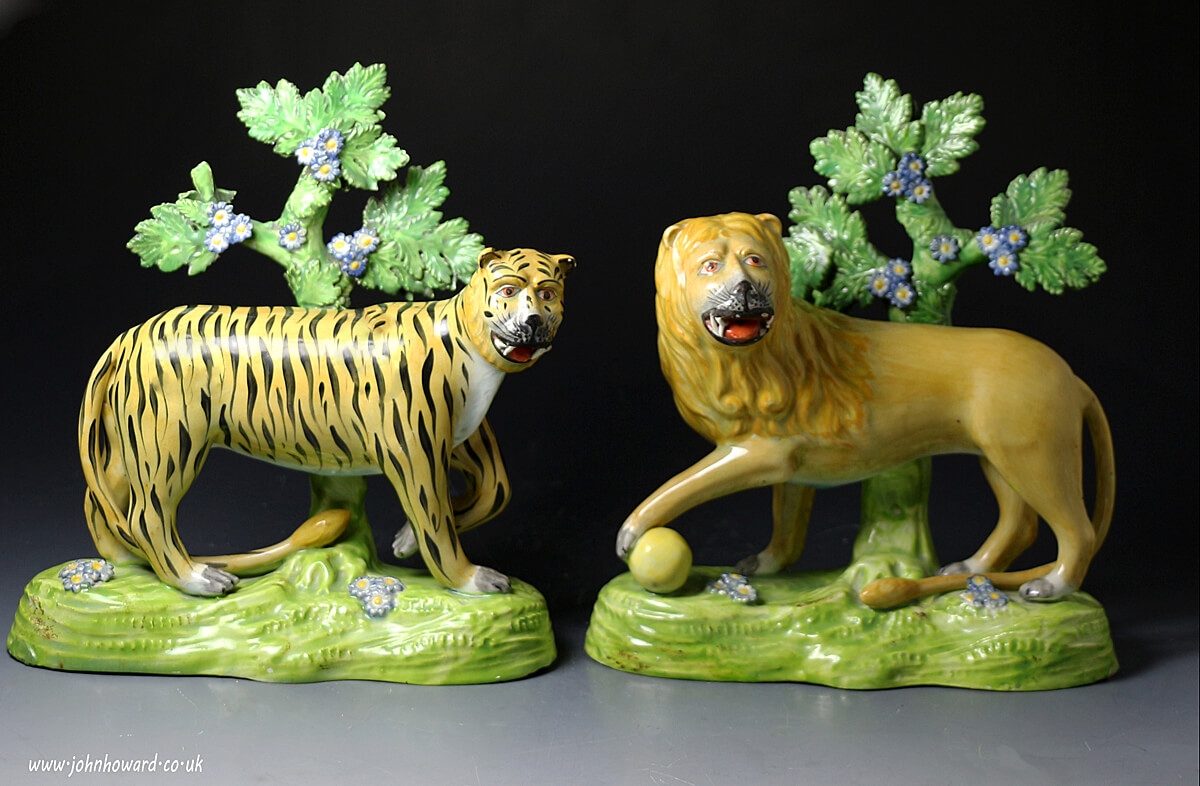
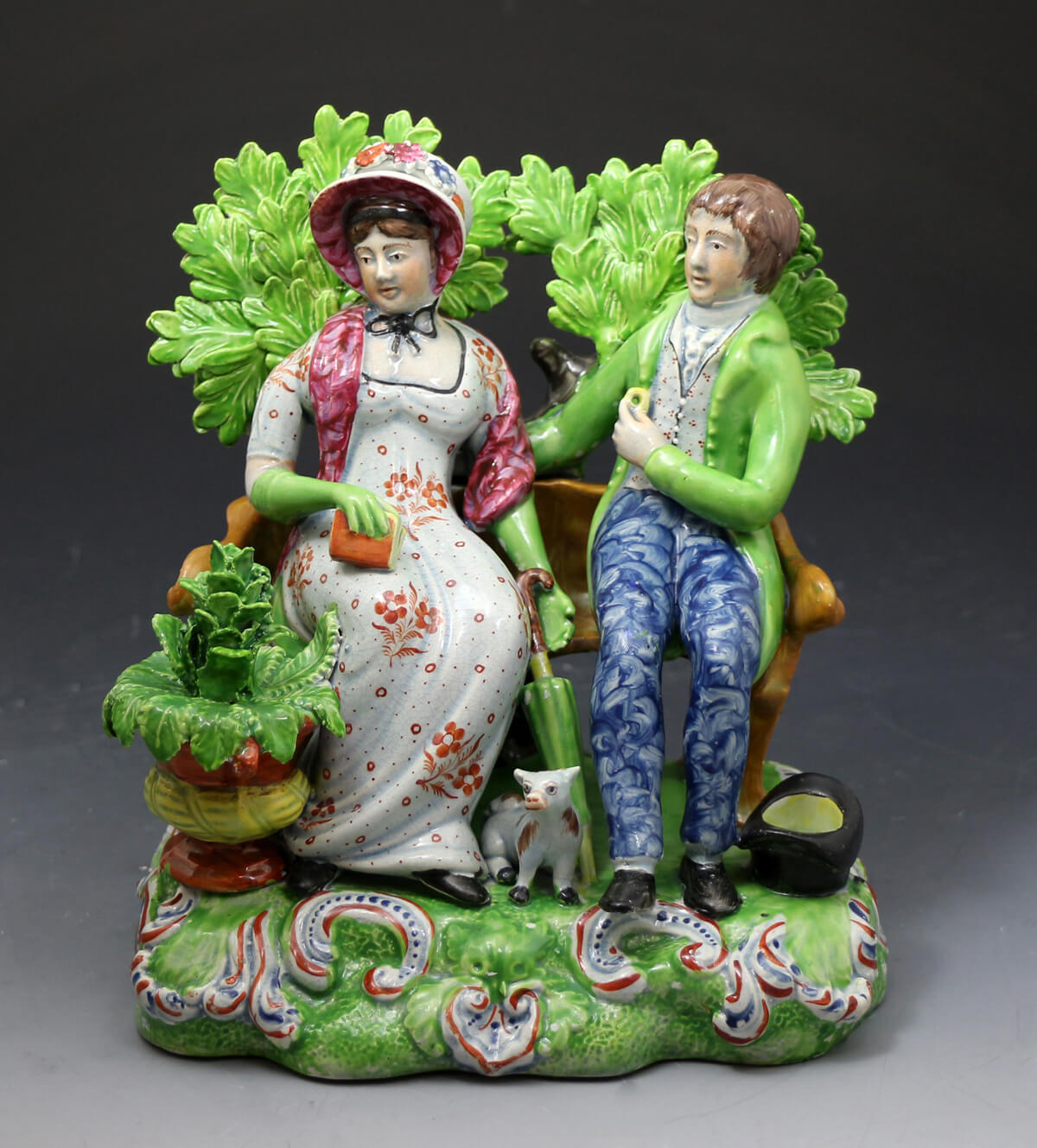
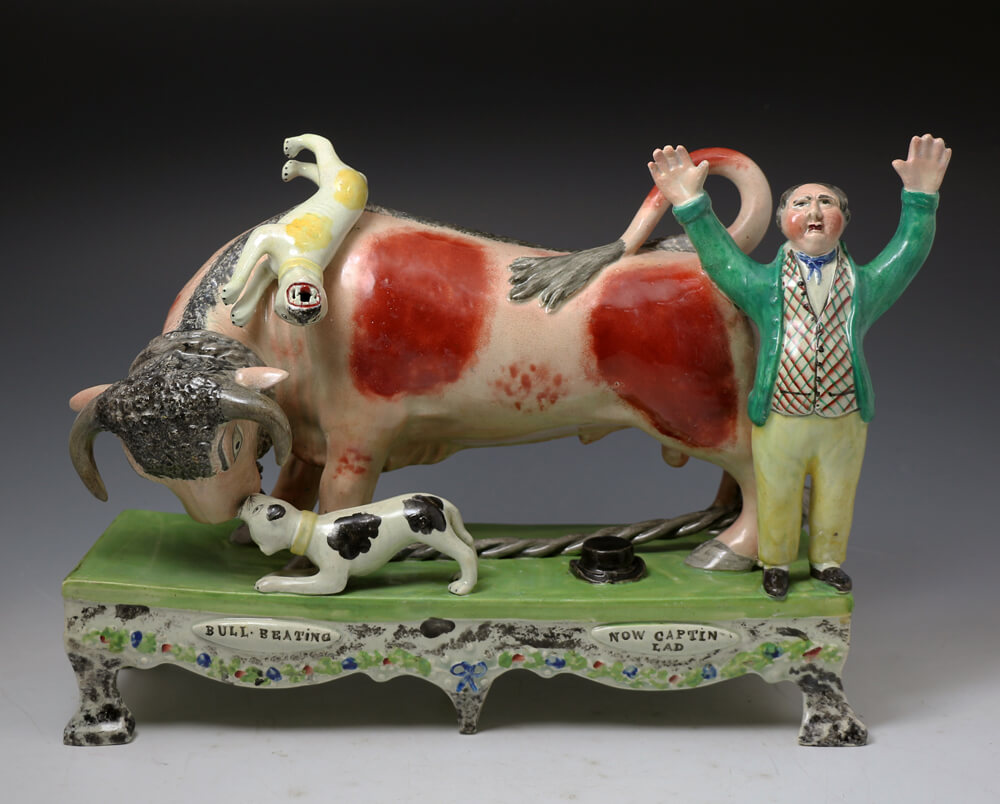
Early English pottery figures are especially engaging because they reveal the full spectrum of everyday life in the 18th and early 19th century and often depict ordinary people engaging in everyday activities—street vendors, children at play, musicians, and gardeners are all captured in clay. Others portray meaningful life-cycle events, including courtships, weddings, and christenings.
Influential people are also fashioned in figural form—radical activists, religious leaders, politicians, military heroes, royalty, and actors and actresses, to name a few. The figures record events that influenced the course of western civilization, including the Agricultural Revolution, the French Revolution, the early temperance movement, and the drive to spread literacy. They allow us to understand what mattered to people—the emphasis on classical figures that dictated the décor of the day, and the host of biblical figures that reflect the centrality of faith. They invite us to ponder how far we had come from that not-so-distant time when barbaric animal sports were central to popular culture, and young waifs were forced to clean chimneys. Collectively, the figures document the people and events that shaped their era, and ultimately, the world we live in today.
Reference Books
- Myrna Schkolne’s four-volume work Staffordshire Figures 1780-1840, published by Schiffer Publishing, is an ambitious effort to catalog and attribute the enormous body of early enamel-painted pottery figures made in the Staffordshire Potteries during the Industrial Revolution. Within their color-packed pages, over 4,000 images afford engaging glimpses of a vanished world. These volumes pay tribute to the potters’ work and importantly, Myrna’s ground-breaking work on attributions will provide an enduring foundation of knowledge for museums and collectors.
Showing 17–32 of 104 results
-
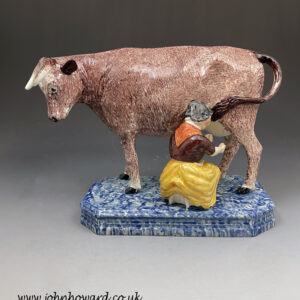
Rare large scale pottery pearlware figure of a cow with seated milk maid England c1810
£5850$7897
-
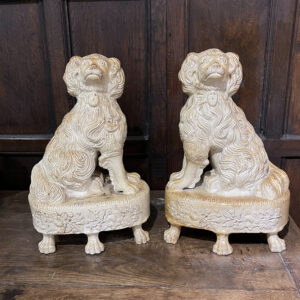
Pair of English saltglaze spaniels on oval bases. Briddon Pottery Derbyshire circa 1830
£4850$6547
-
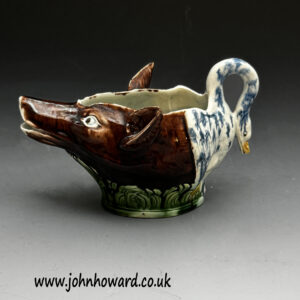
Staffordshire pottery zoomorphic fox and swan sauce boat late 18th century
£1450$1957
-
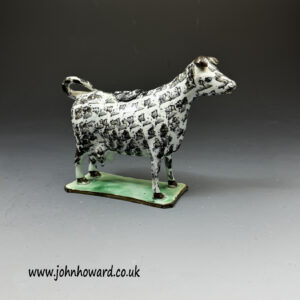
English pottery cow creamer black and white on green base St. Anthony’s Pottery.
£885$1194
-
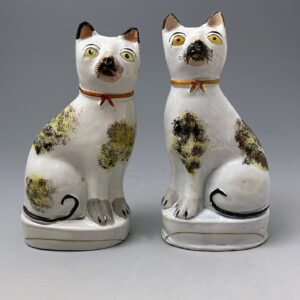
Pair of pottery cats sitting on bases Circa 1850 Staffordshire England
£1175$1586
-
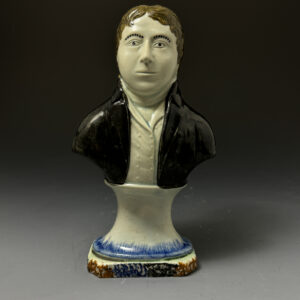
Yorkshire pottery Prattware bust titled MR.Henshaw early 19th century.
£1450$1957
-
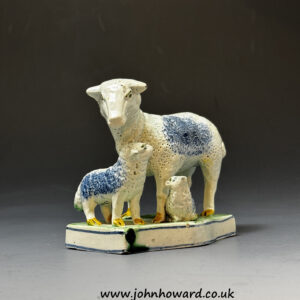
English pearlware figure of a ewe standing with two lambs circa 1810
£885$1194
-
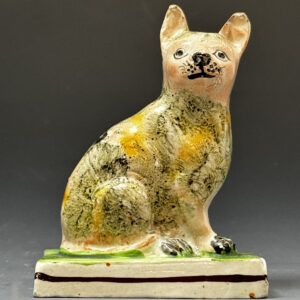
Staffordshire pottery pearlware figure of a cat seated on base circa 1820
£1775$2396
-
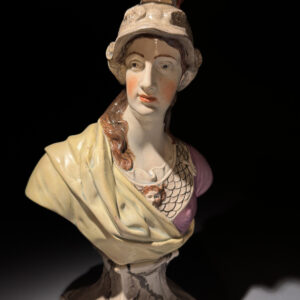
Staffordshire pottery pearlware bust of MINERVA circa 1820
£1485$2004
-
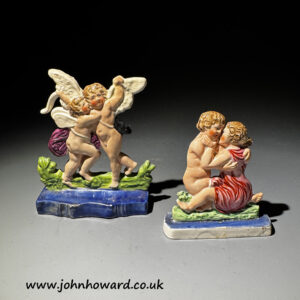
Staffordshire pottery pearlware figures of cherubs and children circa 1820
£1585$2139
-
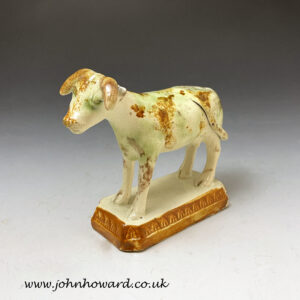
Antique English pottery creamware colored glaze figure of a cow late 18th century
£1150$1552
-
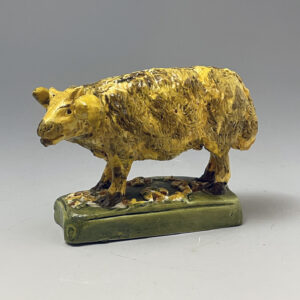
English pottery figure of a ram standing on a floral base late 18th century.
£1650$2227
-
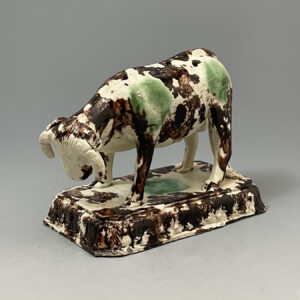
Rare English pottery figure of a bull in Whieldon type colour glazes 18th century
£2850$3847
-
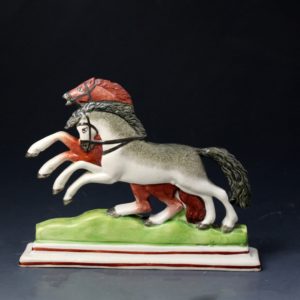
Antique pottery pearlware figure of two prancing horses, probably Swansea Pottery c1820
£1850$2497
-
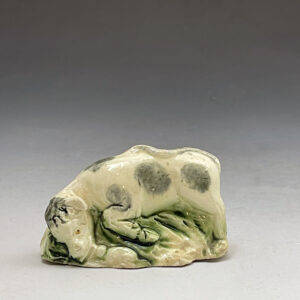
Staffordshire pottery diminutive bull baiting figure, Staffordshire circa 1780
£575$776
-
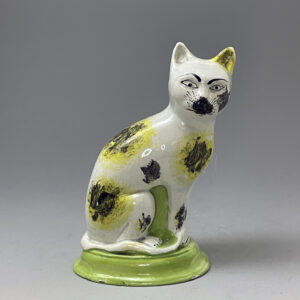
Staffordshire pottery pearlware figure of a seated cat 18th century
£2250$3037

